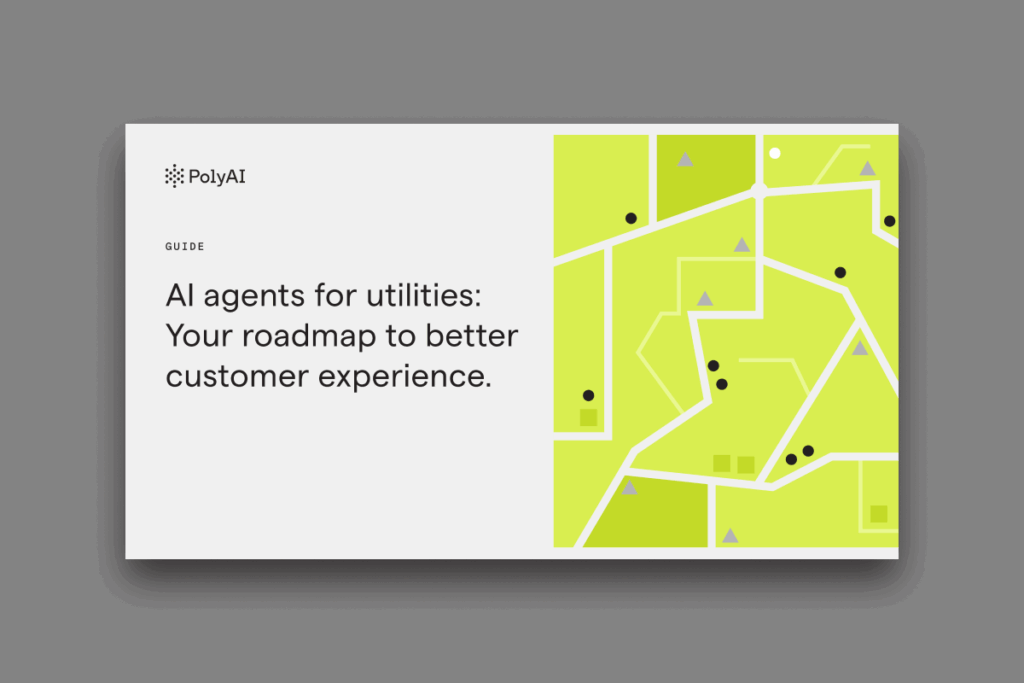Previous generations of voice technology have created frustrating experiences for customers trying to resolve their problems on the phone.
Customers are all too familiar with having to repeat their date of birth or account number multiple times, only to be met by an automated voice saying, “Sorry, I didn’t quite get that. Could you please repeat?”
Conversational AI has evolved. Companies can now deploy a new generation of voice assistants that customers enjoy speaking to.
Great voice assistants must enable customer-led conversation. This means giving callers the freedom to say whatever they want, however they want to say it and engendering confidence that callers will get the best possible resolution.
In this post, we’ll explore 5 pillars of customer-led conversations that will allow enterprises to deliver automated customer service that customers love.
1. Give customers the freedom to speak
Chatbots and IVRs are designed to handle specific inputs and struggle to respond appropriately to unexpected or unfamiliar requests. This means callers have to limit their problem to a few words to guess the correct keyword and progress the call.
When voice assistants sound robotic, customers feel restricted in the way they explain their queries, and trust is lost immediately.
In a customer-led conversation, a voice assistant needs to give callers the freedom to explain their queries in their own words, which includes the ability to use regional slang or non-technical language, and tell stories or interject when they want.
When a caller trusts that a voice assistant can accurately understand them and provide genuinely helpful responses, they will engage in the conversation further, rather than insisting on speaking to an agent.
2. Allow for non-linear conversations
Natural conversations jump around a lot. People don’t talk in straight lines, and they add unexpected information and questions at any point. For example, when making a table reservation, a caller might check mid-conversation whether the restaurant is family-friendly, if there is seating in the garden or if they have disabled access.Voice assistants that force callers into preset paths usually can’t handle unexpected questions or digressions. Experiences like this cause customers to become frustrated and try harder to speak to a customer service representative.
Customer-led conversation needs to support customer logic as well as business logic. PolyAI voice assistants are designed to complete transactions, but they are flexible enough to allow customers to navigate non-linear conversations.
3. Break down long answers
Customers using self-service channels like chatbots may encounter long responses that require them to sift through lots of information to find an answer to their questions.
When a customer interacts with a voice assistant, lengthy responses make it difficult to follow and retain all of the information being provided. To improve the caller experience, the voice assistant has to break its answers down into smaller, manageable chunks that make the conversation more natural.
Not only does this make it easier for the customer to follow the conversation, but it gives them a greater sense of control to further explain specific points at any time, and get an answer efficiently.
4. Invest in understanding
Regardless of the complexity of a call, customer intent matters. But accurately understanding what callers are saying is made even more difficult by the nature of the phone channel. Background noise and poor connections continue to trip up even the best speech recognition tools.
PolyAI uses Spoken Language Understanding (SLU) technology to enhance speech recognition capabilities ensuring the most accurate information capture. This means our voice assistants can still accurately understand what a caller wants even when speech recognition fails to pick up every word.
Customers don’t always know exactly what they need, which can result in using non-technical terms or lengthy explanations. By asking a series of questions to disambiguate a caller’s problem, PolyAI voice assistants give callers the confidence that they understand their intent. When the voice assistant supplies a helpful response, it builds confidence in the caller that they are being guided to the right answer and trusts they won’t get a different response speaking with an agent.
5. Use real voices
Callers have more natural conversations when a voice assistant sounds less robotic. This is particularly important during calls of a sensitive nature. An empathetic tone of voice shows a level of understanding and awareness that legacy voice technologies haven’t been able to achieve.
PolyAI uses voice actors to create a unique brand voice that allows for empathetic, friendly, and free-flowing conversations. This ensures tone of voice is on brand, and that prompts are suitable for the context of the conversation.For instance, that’s a feature that can be particularly helpful in the hospitality industry, which relies on hotel PBX systems.
Conclusion
Customer-led conversation gives customers the freedom to speak naturally, and the confidence that they are understood at every turn.
By supplementing your CX program with voice assistants that encourage natural conversation, callers feel less inclined to speak to an agent, freeing up the contact center to focus on more complex tasks and deliver a lasting positive impression of interacting with your brand.
The Voice Assistance Challenge: Exceeding Customer Expectations
In this webinar with Opus Research, we showcase the new technologies that enable enterprises to automate truly delightful customer experiences over the voice channel.




